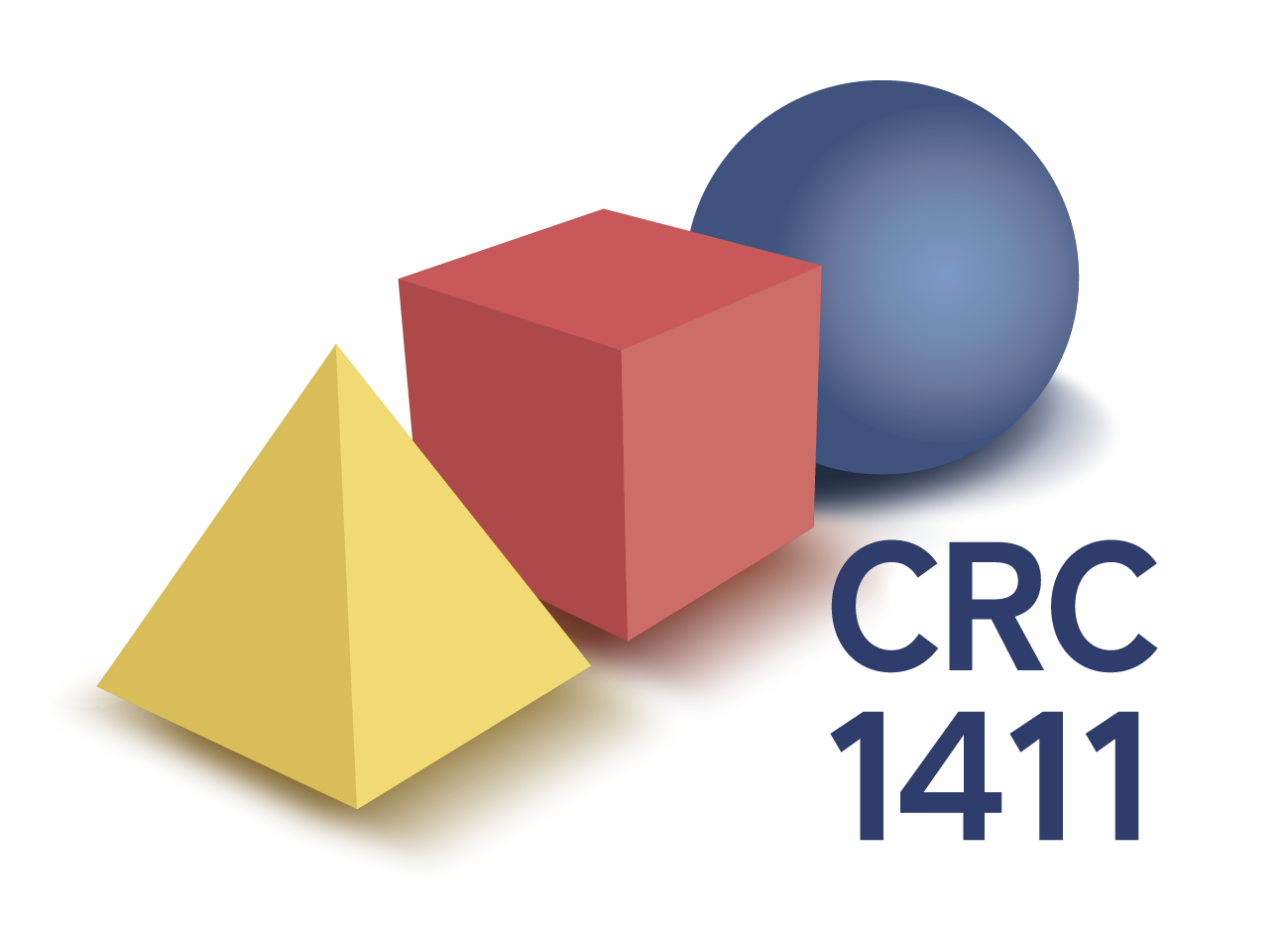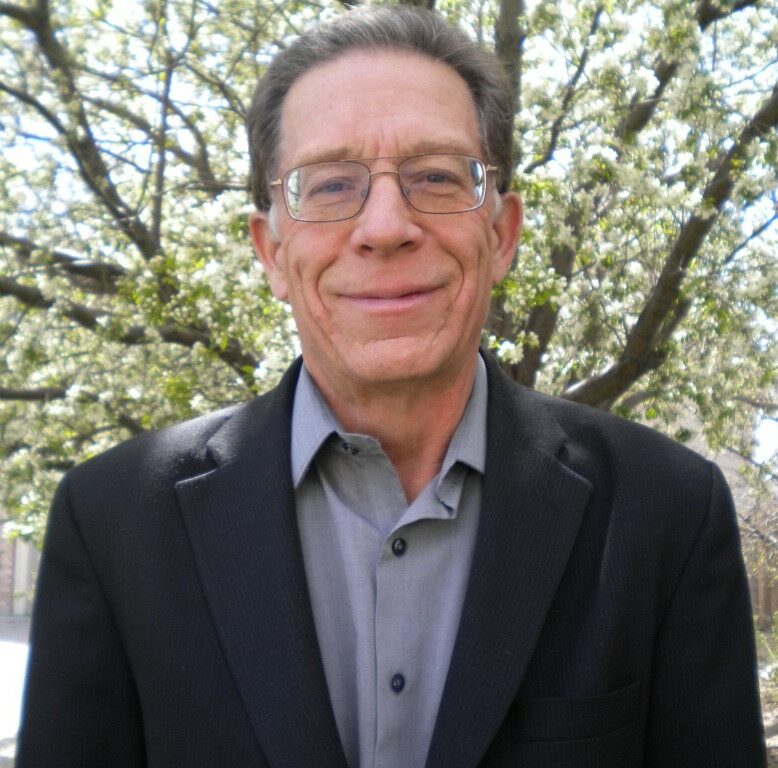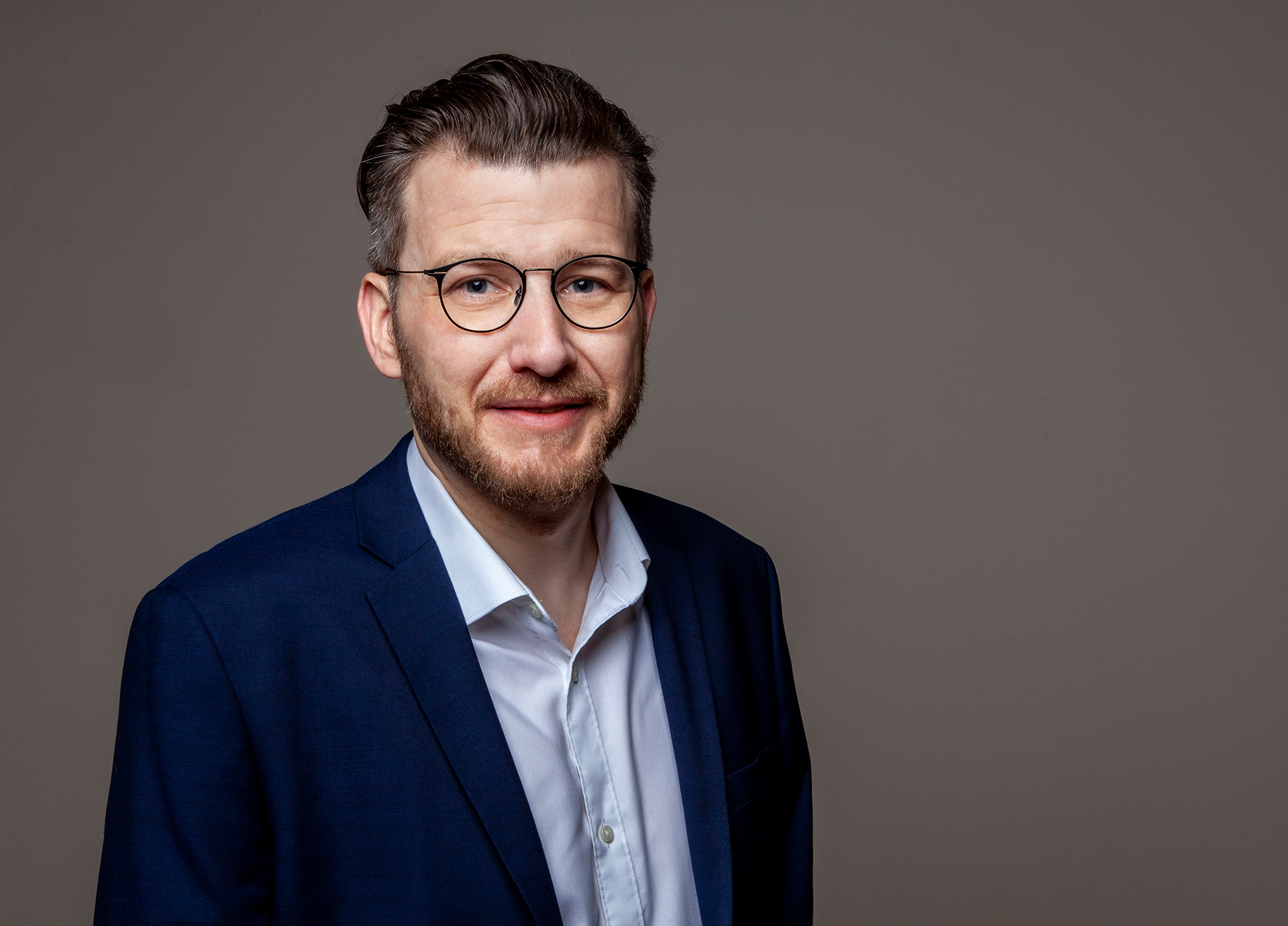CRC 1411 International Symposium
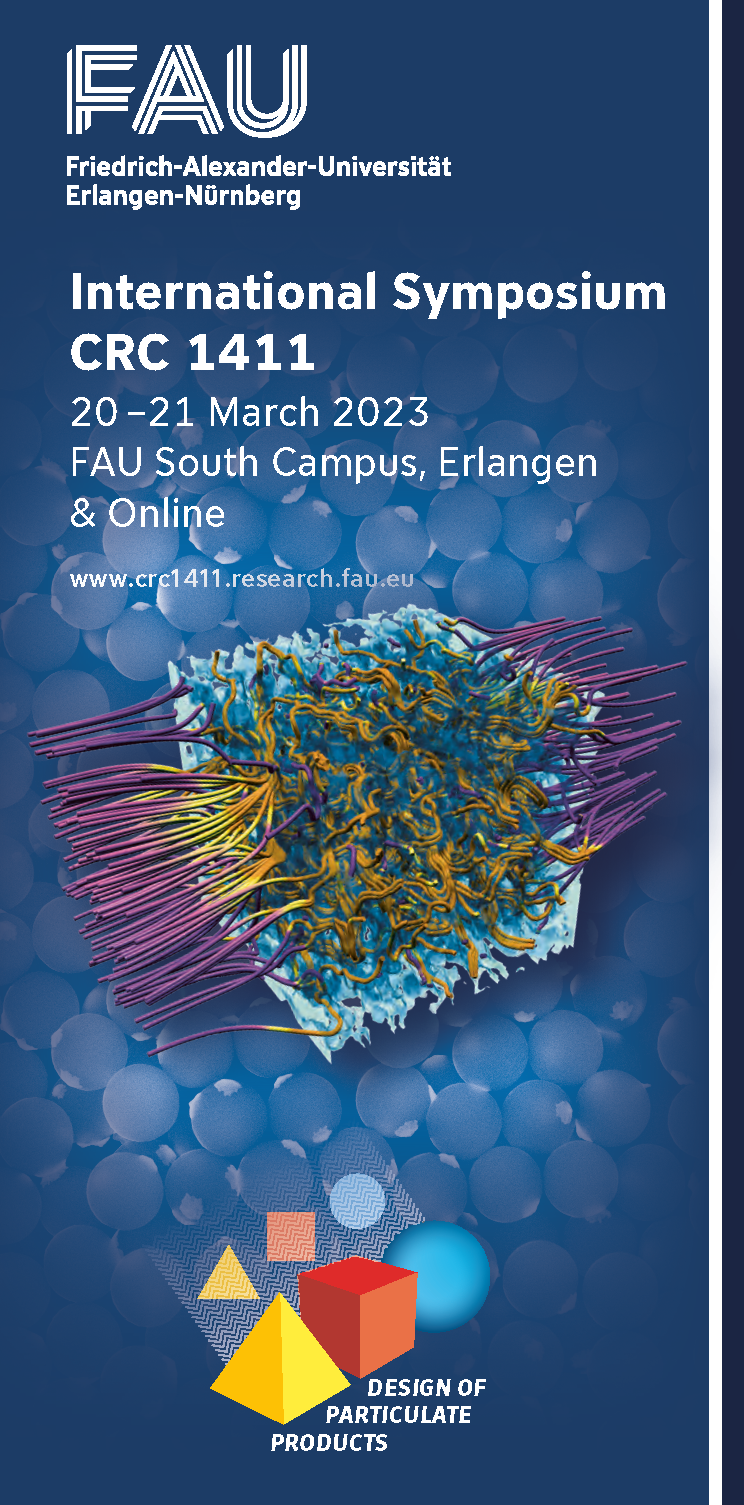
An interdisciplinary event highlighting advances in functional nanoparticle synthesis, particle chromatography, and the numerical and characterization tools which support these
To coincide with the DFG-funded Collaborative Research Center 1411 entering its fourth year, we are holding a 2-day International Symposium from 20-21 March 2023. The event will bring together researchers from around the world to showcase the latest progress in the targeted design of particulate products supported by rigorous optimization of structure-property and process-structure functions. Based around our four research areas, the symposium will feature keynote talks by leading experts and rising stars in the field in addition to talks by CRC 1411 researchers. The programme will also include a poster session, providing attendees with the opportunity to network and engage with cutting edge results from one of the hottest areas of particulate science and technology.
Don’t miss out – register today!
Information
- Date/Time: Monday 20 March (symposium starts at 08:30 CET) and Tuesday 21 March 2023 (symposium ends at approx. 17:00 CET)
- Location: FAU Erlangen-Nürnberg, South Campus
- Hybrid event: All speakers will be present in Erlangen. To promote scientific discussions in the breaks and poster sessions attendees are strongly encouraged to participate in person. Those unable to travel to Erlangen will be provided with a link where they can follow the proceedings via zoom
- Participation fee: Attendance of the symposium is free of charge and includes coffee breaks, lunch on both days and a light buffet dinner during he poster session
- Posters: In-person attendees may present a poster at the Monday evening session as long as they submit their registration, along with a title and abstract by 5 March 2023. Due to space requirements the organizers reserve the right to reject posters which do not have a strong connection to the main topics of CRC 1411.
Registration
In-person registration is now closed! If you wish to attend online, please click the link below:
Click here to register!Programme
Download the programme flyer here
08:00 Arrival and registration 08:45 Welcome address Wolfgang Peukert CRC 1411 Coordinator
09:00 Methods for the vacuum-driven assembly of microspheres Gert Desmet Vrije Universiteit Brussel, Belgium
09:45 Mesoporous material polymer functionalization and resulting properties Annette Andrieu Brunsen TU Darmstadt, Germany
10:30 Coffee break 10:50 Watching paint dry – From colloidal droplets to complex nanostructures Arash Nikoubashman Johannes Gutenberg University Mainz, Germany
11:35 Synthesis of hierarchical porous materials for nanoparticle chromatography (CRC 1411 Project B01) Umair Sultan Institute of Chemical Reaction Engineering, FAU
11:55 Chromatographic classification of gold nanoclusters and nanoparticles by liquid chromatography (CRC 1411 Project B04) Lukas Gromotka Institute of Particle Technology, FAU
From 12:15 to 13:20 Lunch will be served in the cafeteria. Lunch vouchers will be provided.
13:20 Room-temperature Aqueous Synthesis of Metallic Alloy Nanoparticles Enabled by Microreactor Satoshi Watanabe Kyoto University, Japan
14:05 Continuous flow synthesis of patchy particles with tailored morphology and optical properties (CRC 1411 Project A03) Julia Seifert Nanostructured Particles Research Group, FAU
14:25 Luminescent Nanoparticles: Photophysics, Mechanistic Studies, and Applications Ute Resch-Genger Bundesanstalt für Materialforschung und -prüfung (BAM), Germany
15:30 From bioinspired structure formation to particle based metamaterials Andreas Fery Leibniz-Institute of Polymer Research
16:15 Strategies for increased color saturation in colloidal photonic crystals (CRC 1411 Project A05) Gudrun Bleyer Self-Assembled Materials Research Group, FAU
16:35 Topology, material and shape optimization for particle ensembles (CRC 1411 Project D05) Nico Nees Chair of Continuous Optimization, FAU
Moderators:
Ana-Sunčana Smith and Nicolas Vogel09:00 Quantitative Study of Nanomaterials for Life Science Applications Ivo Nischang Friedrich Schiller University Jena
09:45 Multidimensional nanoparticle property characterization using sedimentation analytics (CRC 1411 Project C04) Paola Cardenas Lopez Institute of Particle Technology (Advanced Colloid Characterization Group), FAU
10:05 Characterisation of functionalised surfaces and porous materials (CRC 1411 Project B03) Carola Schlumberger Institute of Separation Science & Technology, FAU
10:25 Coffee break 10:45 Spectroscopic electron microscopy in two and three dimensions Georg Haberfehlner Graz University of Technology, Austria
11:30 Towards micron-scale 3D imaging with atomic detail Philipp Pelz FAU, Germany
12:15 Scale-bridging tomography of hierarchical porous materials for chromatography applications (CRC 1411 Project C01) Benjamin Apeleo Zubiri Institute of Micro- and Nanostructure Research, FAU
From 12:35 to 13:45 Lunch will be served in the cafeteria. Lunch vouchers will be provided.
Moscow State University, Russia
14:30 A multi-scale model hierarchy for material flow problems Simone Göttlich University of Mannheim, Germany
15:15 Coffee break 15:30 Continuous flow synthesis and population-balance modelling of InP quantum dots (CRC 1411 Project A02) Zhuang Wang Chair of Particle Science and Technology, UDE
15:50 The Design of Particulate Products: An Approach Based on Reliable, Minimum, Pseudo-Elementary Step Mechanisms Plus Mechanism-Enabled Population-Balance Modeling Richard Finke Colorado State University
16:35 Design of particulate products: From synthesis to color (CRC 1411 Project D03) Lukas Pflug Chair of Continuous Optimization, FAU
The coordinator of the CRC 1411 for the proposed next funding period, Nicolas Vogel, will make some closing remarks.
Keynote speakers
Our visiting speakers are grouped according to which CRC 1411 research area they most closely correspond to. The symposium programme will combine both research area specific and interdisciplinary sessions.
Research Area A – Formation of Functional Particles
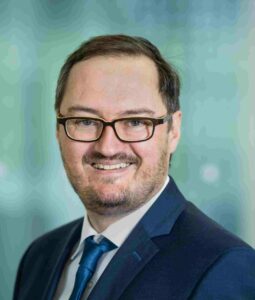
Prof. Dr. Andreas Fery
Institute of Physical Chemistry and Polymer Physics
Leibniz-Institute of Polymer Research
Research ProfileFrom bioinspired structure formation to particle based metamaterials
Metallic nanoparticles offer a range of interesting optical and electronic effects. A prominent example is the localized surface plasmon resonance (LSPR) due to resonant excitations of vibrations of the particles’ free-electron cloud by light. Due to the LSPR, plasmonic nanoparticles provide excellent means for controlling electromagnetic near-fields at optical frequencies, which has led to a broad range of applications in various field such as surface enhanced spectroscopy, light harvesting or photonics.
While much research has been dedicated to understanding nanoparticle synthesis and tailoring their LSPR on the single particle level, ordering particles on different length scales opens another powerful avenue towards optical and electronic functionality, as novel collective plasmonic excitations are occurring due to plasmonic coupling effects.
We focus on achieving such ordered particle arrays via assembly approaches. Colloidal self-assembly indeed succeeds in achieving well-defined colloidal clusters and surface assemblies in which coupling effects can be controlled. Especially when combined with biomimetic surface structuring, large area assemblies are feasible. We discuss the underlying physico-chemical principles of the assembly process and the arising plasmonic coupling effects. Finally we highlight perspectives for taking this assembly principle to meta-surfaces with high field enhancement and/or ultra-high circular dichroism.Short Biography
Andreas Fery is head of the institute for Physical Chemistry/Polymer Physics at the Leibniz Institut für Polymerforschung Dresden since 2015. He studied Physics at Konstanz University, where he received his Diplom in 1996 He did his PhD at the Max-Planck Institute for Colloids and Interfaces (MPIKG)/Potsdam University in 2000. After a post-doc at Institute Curie Paris in 2001, he became group leader at MPIKG and received his habilitation in 2006. In 2007 he joined Bayreuth University as associate professor and was promoted to full professor in 2008. He received the Richard Zsigmondy award of the German colloid society and an ERC starting grant. He has published more than 300 papers in peer-reviewed journals in the area of Polymer science and Colloid and interface science which have been cited more than 14000 times resulting in an h-index of 63. His research interests are in development of novel approaches for Responsive/Bio-interactive Coatings and Nanophotonic/Plasmonic Surface Assemblies. Both research directions benefit from expertise in Characterizing Mechanics and Interactions of Colloidal Particles on the single particle level, using Atomic force microscopy techniques. He is deputy spokesperson of the German Colloid society and treasurer of the European Colloid and Interface Society.
The Design of Particulate Products: An Approach Based on Reliable, Minimum, Pseudo-Elementary Step Mechanisms Plus Mechanism-Enabled Population-Balance Modeling
“All” that one needs in principle to be able to design particles of a desired average size, and perhaps more critically and more challenging of a desired particle-size distribution (PSD), are: (i) reliable, minimalistic, disproof-based pseudo-elementary step (PEStep)[1,2]-based mechanisms for a particular particle formation, and then (ii) use of those PEStep mechanisms in construction of what has recently been termed Mechanism-Enabled Population-Balance Modeling (Me-PBM) [3,4,5]. The deliberately minimalistic, PEStep mechanisms for particle formation have been under discovery and development since the report in 1997 of the Finke-Watzky (FW) 2-step mechanism for nucleation and autocatalytic surface growth [2], hence for at least 25 years. The current status of the PEStep mechanisms for particle formation will be summarized in the talk; there are now at least 96 possible mechanisms for particle formation, as summarized in a recent review [6]. The talk will also detail how one can then use those PESteps to construct ME-PBM computer code—really to infuse mechanistic experimental knowledge and hence limits into PBModeling computer code—rather than just assuming that Classical Nucleation Theory (CNT) is a reliable basis for starting the formation of all particles. It is not [6,7,8]. Three primary papers in ME-PBM are available to the interested reader [3,4,5], including the powerful but computer intensive uses of Bayesian Inversion (BI)statistical methods to obtain error estimates on the parameters of the ME-PBM model [5] and, hence, further test the reliability of the ME-PBM model itself. Use of the resultant, BI-ME-PBM model and associated computer code for predicting average particle size and improved PSD will also be described, current research results and time permitting. Three 2021 reviews that describe the state-of-the-art in nano-particle formations and their mechanisms are also available to the interested reader [6,7,8].
[1] “Pseudoelementary Steps: A Key Concept and Tool for Studying the Kinetics and Mechanisms of Complex Chemical Systems”, Watzky, M. A.; Finke, R. G., J. Phys. Chem A, 2021, 125, 51, 10687–10705
[2] “Transition Metal Nanocluster Formation Kinetic and Mechanistic Studies. A New Mechanism When Hydrogen is the Reductant: Slow, Continuous Nucleation and Fast Autocatalytic Surface Growth”, Watzky, M. A.; Finke, R. G. J. Am. Chem. Soc., 1997, 119, 10382.
[3] “Mechanism-Enabled Population Balance Modeling of Particle Formation En Route to Average Particle Size and Size-Distribution Understanding and Control”, Handwerk, D. R.; Shipman, P. D.; Whitehead, C. B.; Özkar, S.; Finke, R. G. J. Am. Chem. Soc. 2019, 141, 15827-15839.
[4] “Particle Size Distributions via Mechanism-Enabled Population Balance Modeling”, Handwerk, D. R.; Shipman, P. D.; Whitehead, C. B.; Özkar, S.; Finke, R. G. J. Phys. Chem. C, 2020, 124, 4852-4880.
[5] “Estimating reaction parameters in mechanism-enabled population balance models of nanoparticle size distributions: A Bayesian inverse problem approach”, Long, D.; Bangerth, W.; Handwerk, D.; Whitehead, C.; B.; Finke, R. G. J. Comp. Chem. 2022, 43, 43-56.
[6] “A Review of In Situ Synchrotron XAFS and SAXS Investigations of Metal, Metal-Oxide, and Semiconductor Nanoparticle Syntheses en Route to Reliable, Disproof-Based, Deliberately Minimum Mechanisms for Particle Formation”, Whitehead, C. B.; Finke, R. G. Materials Advances, 2021, 2, 6532-6568.
[7] “LaMer’s 1950 Model of Particle Formation: A Review and Critical Analysis of Its Classical Nucleation and Fluctuation Theory Basis, of Competing Models and Mechanisms for Phase-Changes and Particle Formation, and then of Its Application to Silver Halide, Semiconductor, Metal, and Metal-Oxide Nanoparticles”, Whitehead, C. B.; Özkar, S.; Finke, R. G., Materials Advances 2021, 2, 186-235.
[8] “LaMer’s 1950 Model of Particle Formation: A Review and Critical Analysis of Its Classical Nucleation and Fluctuation Theory Basis, of Competing Models and Mechanisms for Phase-Changes and Particle Formation, and then of Its Application to Silver Halide, Semiconductor, Metal, and Metal-Oxide Nanoparticles”, Whitehead, C. B.; Özkar, S.; Finke, R. G., Materials Advances 2021, 2, 186-235.Short Biography
Richard Finke obtained his Ph.D. at Stanford University co-advised by professors James P. Collman and John I. Brauman. He started his academic career as a professor of organic chemistry at the University of Oregon. After 16 years he moved in 1993 to Colorado State University where he is formally a Professor of inorganic and materials chemistry. His interests center around catalysis, synthetic and especially mechanistic chemistry, with publications in the areas of organometallic chemistry, Coenzyme B12 bio-inorganic chemistry, polyoxoanion chemistry, oxidation chemistry and catalysis, lanthanide and actinide chemistry, electrochemistry, organic photovoltaics coupled to water-oxidation catalysis, and the often challenging question of “is it homogeneous or heterogeneous catalysis?” for which he received a 2022 American Chemical Society Cope Senior Scholar award. Since the late 1980s a focal area has been nanoparticle formation reactions, kinetics and disproof-based minimum mechanisms. More recently, efforts have focused on mechanism-enabled population balance modeling (ME-PBM), including the use of Bayesian inversion statistical methods for evaluating the robustness of the mechanistic model’s rate constant parameters and, thereby, the underlying particle formation mechanistic model itself.
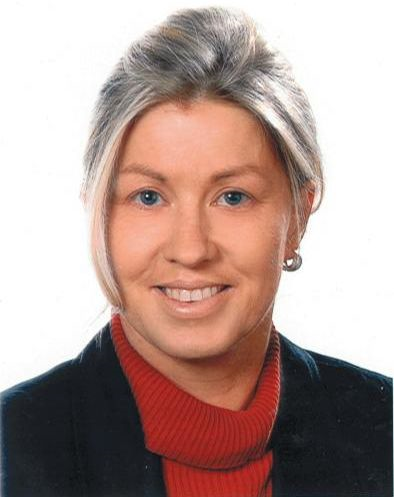
Dr. rer. nat. Ute Resch-Genger
Bundesanstalt für Materialforschung und -prüfung (BAM)
Research ProfileLuminescent Nanoparticles – Photophysics, Mechanistic Studies, and Applications
Inorganic nanocrystals with linear and nonlinear luminescence in the ultraviolet, visible, near infrared and short-wave infrared like semiconductor quantum dots and spectrally shifting lanthanide-based nanophosphors have meanwhile found many applications in the life and material sciences. This includes optical reporters for bioimaging and sensing, security and authentication barcodes, solid state lighting, converter materials, and photovoltaics. The identification of optimum particle structures requires quantitative spectroscopic studies under application-relevant conditions, focusing on the key performance parameter photoluminescence quantum yield, ideally flanked by single particle studies to assess spectroscopic inhomogeneities on a particle-to-particle level for typical preparation methods. In this context, methods to quantify the photoluminescence of these different nanoscale emitters are shown and utilized as a basis for a profound mechanistic understanding of the nonradiative deactivation pathways in semiconductor and upconversion nanocrystals of different size and particle architecture in different environments. Exemplary for the application potential of such nanomaterials, in addition, the design of optical sensors from different nanomaterials and functional organic dyes is briefly summarized.
Short Biography
Dr. Resch-Genger is head of division Biophotonics at the Federal Institute for Materials Research and Testing (BAM). Her research interests include the photophysics of molecular and nanocrystalline UV/vis/NIR/SWIR emitters, stimuli-responsive optical probes, and signal enhancement, multiplexing, and encoding strategies, here also with emphasis on tome resolved fluorescence. As a senior scientist at a national metrological institute, she is also responsible for concepts for validating optical-spectroscopic measurements and developing optical reference materials (fluorescence standards). She is co-chair of the steering committee of the Methods and Applications in Fluorescence (MAF) conference series, member of the editorial advisory boards of the journals Scientific Reports, Bioconjugate Chemistry, and MAF and the German expert for luminescent nanomaterials in international standardization (IEC; ISO).
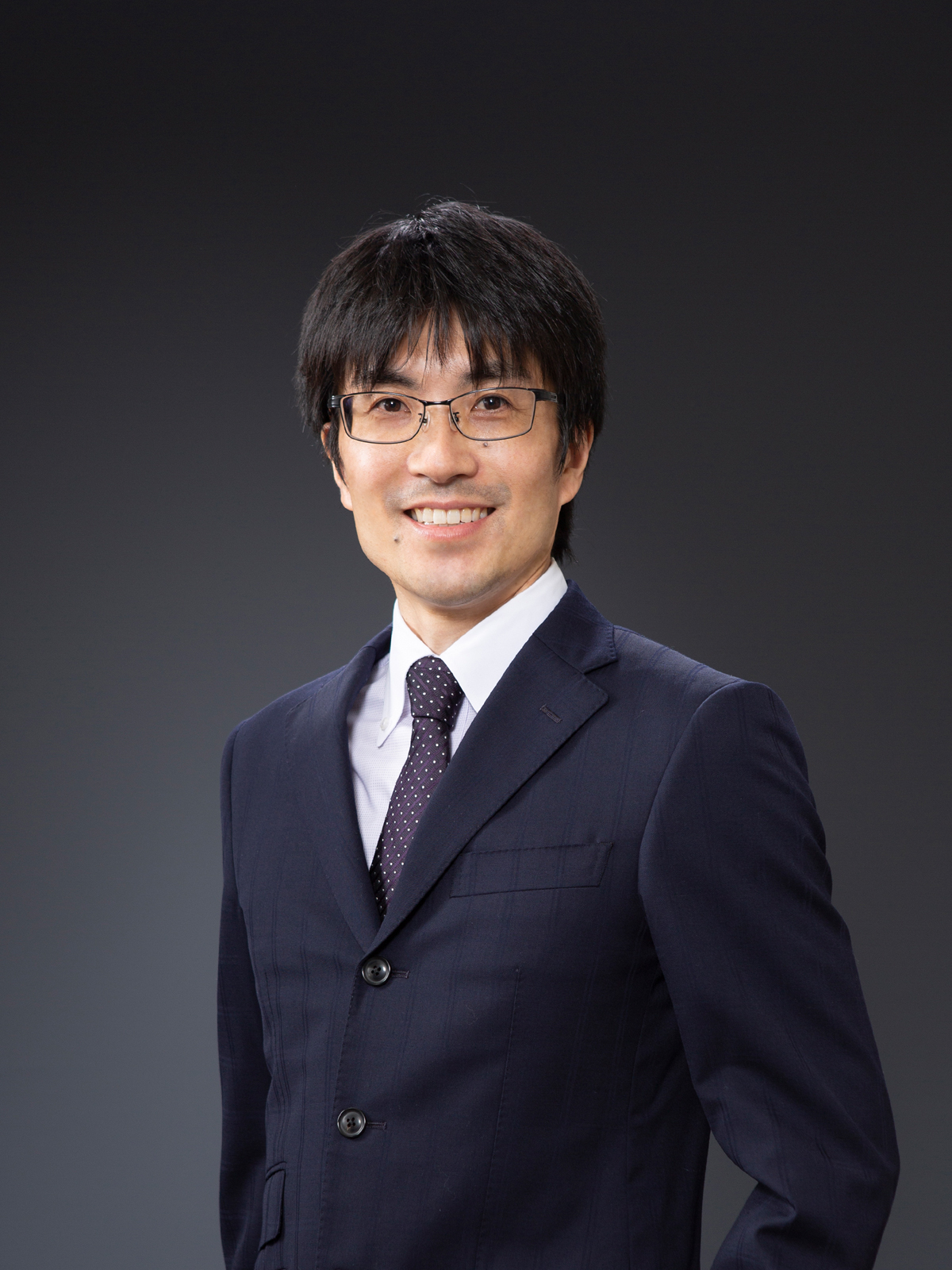
Prof. Satoshi Watanabe
Surface Control Engineering Laboratory
Department of Chemical Engineering
Kyoto University
Research ProfileRoom-temperature Aqueous Synthesis of Metallic Alloy Nanoparticles Enabled by Microreactor
Metal nanoparticles (NPs) are key materials used in a variety of industries. Among the various synthetic routes of NPs, liquid-phase chemical reactions are promising because of their versatility in reaction conditions as well as their potential productivity. However, because the synthesis of NPs involves not only chemical reactions but also nucleation and growth processes, which are typically higher-order reactions in terms of the concentration, a small degree of nonuniformity in the concentration during mixing of reaction solutions can easily result in a wide size distribution of the resultant particles. A typical solution to this problem is to slow the rate of reactions compared with that of mixing; however, as a result, the synthetic processes often require long reaction periods and complex procedures. In this study, we applied a microreactor[1-4] with excellent mixing performance to NP synthesis to simplify and intensify the processes. We synthesized palladium-ruthenium and platinum-cobalt alloy NPs as a model material. Our experiments demonstrated that the microreactor successfully produced both Pd-Ru and Pt-Co alloy NPs with a controlled composition, while batch-type synthesis with weaker mixing intensity resulted in alloy NPs with a broader range of composition. Monodispersed alloy NPs in size and composition were synthesized by simply mixing the reaction solutions in the microreactor at room temperature. To the best of our knowledge, this is the first synthesis results of Pd-Ru alloy NPs with controlled compositions at room temperature. These results demonstrate that the mixing process plays a key role in NP synthesis, and application of a microreactor enables the establishment of a facile and robust synthetic process.
[1] S. Watanabe et al., Part. Part. Syst. Charact. 32, 234 (2015)
[2] S.S. Maw, S. Watanabe, and M.T. Miyahara, Chem. Eng. J. 374, 674 (2019)
[3] A. Fujiwara, S. Watanabe, and M.T. Miyahara, Langmuir 37, 3858 (2021)
[4] S. Watanabe et al., Front. Chem. Eng. 3, 780384 (2021)Short Biography
- 2000.03 B.S. in Undergraduate School of Industrial Chemistry, Kyoto University
- 2002.03 M.S. in Department of Chemical Engineering, Kyoto University
- 2005.03 Dr. Eng. in Department of Chemical Engineering, Kyoto University
- 2005.04 Assistant Professor, Department of Chemical Engineering, Kyoto University
- 2015.04 Junior Associate Professor, Department of Chemical Engineering, Kyoto University
- 2019.08 Associate Professor, Department of Chemical Engineering, Kyoto University
Research Area B – Particle Chromatography
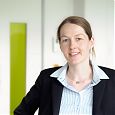
Prof. Dr. Annette Andrieu Brunsen
Smart membranes Group
Department of Chemistry
Technical University of Darmstadt
Research ProfileMesoporous material polymer functionalization and resulting properties
Nanoscale pores and their structure-function relationship has a strong impact on various technologies from oil production, separation and sensing, to drug delivery, catalysis and energy conversion. One characteristic structure-property relationship refers to the influence of nanopore (polymer) functionalization and mass or fluid transport.
In contrast to technological pores, biological pores and channels demonstrate highly precise transport being directed, highly selective, fast, and gated. A key factor to this performance is their nanoscale structure and local control on charge regulation and polarity. Inspired by this performance and nanoscale precision we are interested in designing precisely functionalized nanoscale porous materials to understand and advance transport performance of technological pores, e.g. by pushing the limits of polymer functionalization in nanopores
This talk will highlight our recent results in polymerization control and automated polymer writing in silica mesoporous films using visible light induced polymerizations. Selected examples demonstrating the resulting ionic mesopore accessibility, determined by polymer chain architecture, polymer amount, monomer charge, and spatial confinement will be given. Charge-regulation in spatial confinement of mesopores and its influence on ionic transport as well as the influence of wettability on fluid and mass transport in mesopores will be discussed.Short Biography
Annette Andrieu-Brunsen studied Chemistry at the Philipps-Universität Marburg (Germany). She got her PhD from the Johannes-Gutenberg Universität and the Max-Planck-Institute for Polymer Research in Mainz (Germany) partly funded by the Studienstiftung des Deutschen Volkes in 2010 and has been working together with Prof. Soler-Illia and Prof. Azzaroni at the CNEA in Buenos Aires (Argentina) before becoming appointed as Assistant Professor at the TU-Darmstadt (Germany). In 2018 she was appointed associate professor at TU-Darmstadt and in 2020 she was appointed full professor at TU Darmstadt (Germany). She received several awards and was granted an ERC StG in 2018. Her research interest focuses on functional nanopore and nanopore transport design. This includes polymer functionalization of spatially confined nanopores, nanopore wetting and charge control, innovative nanoporous material and architecture design as well as automated design procedures.
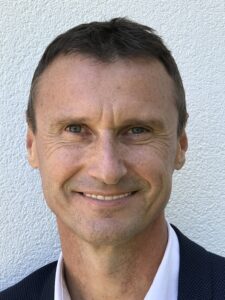
Prof. Gert Desmet
Chemical Engineering and Industrial Chemistry
Vrije Universiteit Brussel
Research ProfileMethods for the vacuum-driven assembly of microspheres
The present study has been part of a larger project aiming at the development of a layer-by-layer microsphere particle stacking method to produce 3D ordered, monolithic particle beds. In the present work we mainly focused on the formation of perfectly ordered 2D layers and their subsequent deposition upon a suitable target substrate. Several strategies, encompassing both wet and dry assembly methods, are compared. All methods started with a suspension step (suspension in liquid, creation of airborne particle using an electrostatic cell or using an impact device with rise pipe) followed or accompanied by a vacuum-driven particle assembly step using a micromachined silicon membrane perforated by an ordered array of through-pores. Varying the pattern of the holes, a broad variety of different 2D particle patterns could be generated. It was also demonstrated that the methods are to a large extent material-independent, as both polymeric and ceramic particles of both a hydrophilic or a hydrophobic nature could be assembled.
Short Biography
Gert Desmet is a professor in chemical engineering at the Vrije Universiteit Brussel. His research mainly focuses on the miniaturization and automation of separation methods, as well as on the investigation and the modelling of flow effects in chromatographic systems. Since 2016 he is the holder of an ERC Advanced Grant for research in this area. Next to this he is a Deputy-director of the Solvay Institutes for Physics and Chemistry. He is also a past chair of the Chemistry Panel of the Flemish National Science Fund and an Associate Editor of Analytical Chemistry, one of the flagship journals of American Chemical Society and figuring in Nature’s top 100 of most influential scientific journal. He was voted in the top 20 of the world’s most influential researchers in analytical sciences by the readers of the Analytical Scientist and won multiple international awards. In 2008, he received the “Emerging Leader in Chromatography”-award from LC-GC. In 2009, he received the Silver Jubilee Medal of the Chromatographic Society of the UK. In 2019, he received the American Chemical Society Award for Chromatography”. In 2020, he was attributed the A.J.P. Martin medal from the Chromatographic Society of the UK, named after the 1952 Nobel Laureate, as well as the Golay Award from Perkin-Elmer. He holds an ERC Advanced Grant and is a member of the permanent scientific committee of the two most important and long-standing international conference series in the area of chromatography.
Research Area C – Comprehensive Characterization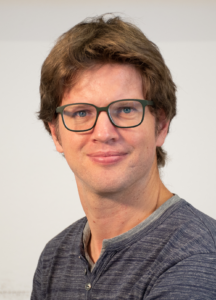
Dr. Georg Haberfehlner
Institute of Electron Microscopy and Nanoanalysis
Technical University of Graz
Research ProfileSpectroscopic electron microscopy in two and three dimensions
Electron energy-loss spectroscopy (EELS) and energy-dispersive X-ray spectroscopy (EDXS) in the scanning transmission electron microscope (STEM) are powerful methods for elemental mapping at the nano- and atomic scale. In addition, EELS also provides information about chemical bonding or about optical materials properties. Usually, a TEM only gives projected 2D information about a sample, but by acquisition and reconstruction of a tomographic tilt series STEM imaging and spectroscopy can be extended to the third spatial dimension.
In this presentation, we will introduce the principles of spectroscopic STEM imaging for accessing elemental information, but also for the excitation and imaging of surface polarition fields stemming from either plasmons or optical phonons. We will show examples of surface plasmon imaging on different plasmonic materials and devices, ranging from single metallic nanoparticles to more complex multimaterial assemblies. Finally, we will discuss the combination of spectroscopy and tomography. We will show methods, issues and possible solutions for accessing elemental composition in three dimensions, as well as for reconstruction the electromagnetic properties of surface polariton fields.Short Biography
After studying Electrical Engineering in Vienna, Georg Haberfehlner did his PhD at CEA, Leti in Grenoble working on electron tomography of semiconductor materials and devices. In 2013, he joined the FELMI-ZFE Graz, where he has been working since then. His main research interest is the combination of spectroscopic TEM methods with tomography for imaging 3D composition and optical properties at the nanoscale.
Quantitative Study of Nanomaterials for Life Science Applications
Dated back to approximately a century ago, the origins of colloid and polymer science were accompanied by the development of the understanding of disperse systems. A key instrument stimulating this development was, and is, an analytical ultracentrifuge (AUC), an absolute tool for the characterization of particles, proteins, and macromolecules. Together with modern numerical opportunities, the AUC matured from a classical and powerful technique in the area of biophysics directed toward new applications in the area of engineered nanomaterials.
Based on the above perspective, the modern high-end characterization of polymers and nanocarriers engineered for medical purposes are in focus of the presentation. The AUC allows characterization of solution components throughout the entire colloidal size range. This is enabled by the widely adjustable rotor speeds and, consequently, centrifugal forces. Modern experimental opportunities make use of multidetection as well as investigations at varying temperatures and in diverse solvents.
After introducing general polymer and colloid parameters determinable by anlysis of AUC data in a simplified fashion, the AUC’s modern experimental possibilities developed and utilized in our contemporary research on new nanocarrier systems are featured. Examples concern stealth polymers, dynamics of polymer (self-)assemblies as well as medical nanoparticles having particular functions such as carrying antinflammatory drugs, cell-specific targeting moieties, tailored stability, and controlled degradation profiles. The study of dynamic processes such as material stability in a variety of solutions, the material-biofluid interactions, and material erosion are highlighted.Short Biography
Ivo Nischang graduated from the University of Magdeburg (Germany) in 2007 with research on flow and transport in chromatographic systems. Afterward, he carried out his postdoctoral studies at the University of California at Berkeley (USA) working on porous polymer monoliths, their miniaturization potential, and for bio-separations. After receiving his “Habilitation” degree in the fields of the synthetic design and physicochemical study of porous materials at the Johannes Kepler University Linz (Austria), he joined the Jena Center for Soft Matter (JCSM), being responsible for the solution characterization of polymers and nanoparticles by the methods of hydrodynamics and light scattering. At present, the research of his group, in context of the DFG-funded Collaborative Research Center 1278 “PolyTarget” at the Friedrich Schiller University (FSU) Jena, focuses on the development of advanced solution characterization techniques for engineered nanomaterials, including compatibility with biofluids and patient sera. This concerns conceptual development of the AUC and orthogonal techniques for advanced nanomaterial studies
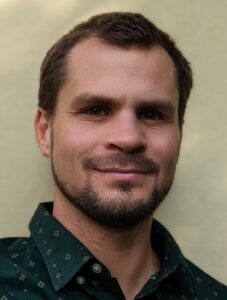
Prof. Dr. Philipp Pelz
Computational Materials Microscopy Group
Institute of Micro- and Nanostructure Research
Department of Materials Engineering
FAU Erlangen-Nürnberg
Research ProfileTowards micron-scale 3D imaging with atomic detail
Abstract to follow
Short Biography
Philipp Pelz received Bachelor degrees in Physics (2011) and Computer Science (2012) at TU München, and Master degrees in Applied & Engineering Physics, Materials Science and Chemistry (2013) in Munich, Turin, and Montpellier. In 2018 he obtained a Ph.D. in Physics on computational imaging of biological macromolecules at the Max Planck Insitute for the Structure and Dynamics of Matter in Hamburg. Subsequently, he spent his postdoctoral training at the University of California, Berkeley, and the National Center for Electron Microscopy, working on atomic resolution computational phase-contrast tomography, computational imaging methods and optimal experimental design. In 2022, Philipp Pelz joined the Materials Science Department of the Friedrich-Alexander Universität Erlangen-Nürnberg as a tenure-track professor, leading the Computational Microscopy research group. The Computational Microscopy group develops advanced algorithms for efficient processing, reliable reconstruction, and automated information extraction from multidimensional microscopy datasets, predominantly in electron and X-ray microscopy.
Research Area D – Modelling and Optimisation
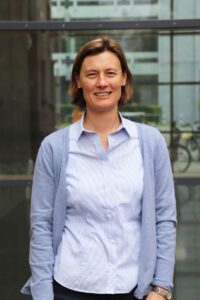
Prof. Dr. Simone Göttlich
Scientific Computing Research Group
School of Business Informatics and Mathematics
University of Mannheim
Research ProfileA multi-scale model hierarchy for material flow problems
The material flow problems under consideration have a granular like structure and allow for a multi-scale model hierarchy. Starting from a detailed microscopic model based on Newton type dynamics, a corresponding macroscopic model is derived, leading to conservation laws with non-local interaction term. Both modeling approaches are fitted against real data from an experimental setup. In addition to numerical simulation results, we also address theoretical investigations to stress the well-posedness of the non-local macroscopic model.
Short Biography
- since 2021: Editorial Board Mitteilungen der Deutschen Mathematiker-Vereinigung
- since 2019: Elected member of the Senate of the University of Mannheim
- since 2014: Elected member of the School Council (WIM), University of Mannheim
- 2012–2015: Equal opportunities commissioner of the University of Mannheim
- since 2011: Full Professor (W3) at School of Business Informatics and Mathematics (WIM), University of Mannheim
- 2011: Habilitation in Mathematics, TU Kaiserslautern
- 2009–2011: Akademischer Rat auf Zeit (former C1 Assistant Professor) at Dept. of Mathematics, TU Kaiserslautern
- 2007: PhD in Mathematics with Prof. Axel Klar and Prof. Christian Ringhofer, TU Kaiserslautern
- 2004–2009: Research Assistant at Dept. of Mathematics, TU Kaiserslautern
- 2004: Research Assistant at Dept. of Mathematics, TU Darmstadt
- 2003: Diploma in Mathematics with Prof. Axel Klar, TU Darmstadt
- 1999–2003: Studies in Mathematics with focus on Economics, TU Darmstadt
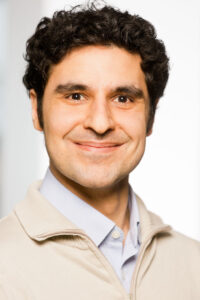
Dr. Arash Nikoubashman
Leader of Heisenberg Group “In silico – From theoretical models to bio-inspired materials”
Institute of Physics
Johannes Gutenberg University Mainz
Research ProfileWatching paint dry – From colloidal droplets to complex nanostructures
Drying colloidal dispersions are encountered in many technologies, including painting, inkjet printing, and manufacturing polymer LED displays. In these applications, colloidal particles are typically initially dispersed in a liquid solvent such as water, which then evaporates, leaving behind a dried residue of colloidal particles. Recently, we observed in both experiments and simulations of drying droplets containing a bidisperse colloidal mixture, that the smaller species accumulated in the shell of the resulting supraparticle followed by a homogeneously mixed core-region of small and big colloids. The ability to fabricate structures with such (multi-)layered morphologies in a single processing step is highly promising for applications in coating, catalysis, and chromatography. To understand this counterintuitive behavior, we conducted particle-based simulations and dynamic density functional theory calculations, with and without hydrodynamic interactions between the particles and the interfaces. According to our model calculations, such “inverted stratification” occurs because evaporation induces a local increase of the colloid concentration near the film-air interface, resulting in a chemical potential gradient for both species; typically, this gradient is steeper for the larger colloids, leading to a stronger force pushing them away from the droplet-air interface; inverted stratification then occurs if the mobility of the larger colloids decreases slower than the driving force increases. Comparing the various simulations and experiments, we found that including hydrodynamic interactions can decrease or even completely suppress the drying induced segregation of the solute.
Short Biography
Academic positions:
2022-now: Heisenberg group leader (JGU Mainz)
2019-now: Guest associate professor (Keio University, Japan)
2015-2022: Emmy Noether research group leader (JGU Mainz)
2012-2015: Postdoctoral research fellow (Princeton University, USA)Education:
2012: PhD Physics (TU Wien)
2010: BSc Computer Science (HHU Düsseldorf)
2009: MSc Physics (HHU Düsseldorf)
2007: BSc Physics (HHU Düsseldorf)Awards:
2021: Heisenberg fellowship
2015: Emmy Noether fellowship
2015: Blavatnik Award for Young Scientists (Winner in Chemistry)
2012: Postdoctoral fellowship by the Princeton Center for Complex Materials
Prof. Dr. Olga Vinogradova
Laboratory of Microfluidics and Nanofluidics
Laboratory of Physical Chemistry of Modified Surfaces
Moscow State University
Research ProfileEnhancement of electrokinetic transport in micro- and nanochannels by tuning surface properties
Abstract to follow
